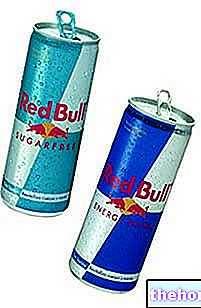In the nutritional field, magnesium refers to a macro-element of mineral origin - more precisely a metal - with the symbol "Mg" and atomic number 12 and shape. Note: in food and in the human body, magnesium is always present in the 2+ form (Mg ++).

Magnesium is an essential nutrient for the life of all cells, as it constitutes over 300 types of enzymes and has a particular affinity for phosphate groups. It interacts with fundamental molecules such as ATP, DNA and RNA. Its presence in cells is positively correlated with that of potassium, while it appears to compete with calcium levels.
The organism contains more than 22-26 g (about 0.35 g / kg) which is equivalent to 0.34% of the body mass. Of these, 60% is found in the bones - inside the hydroxyapatite - the 39% is intracellular - of which 20% is in skeletal muscle - and 1% is extracellular; overall, 32-35% of the total magnesium is complexed with proteins - such as enzymes - and nucleic acids.
In the blood, it can be found both dissolved in the liquid fraction and in the corpusculate. Normal serum levels correspond to 0.7-1.0 mmol / liter - 1.8-2.4 mEq / liter - and tend to remain in homeostasis - for a double regulation that affects absorption and excretion. An excess of magnesium in the serum, unlikely in healthy people, is called hypermagnesemia, while a deficiency - which is frequent, even if mildly asymptomatic - is called hypomagnesemia. Magnesium insufficiency has various repercussions, including for example muscle weakness and cramps. Hypermagnesemia can be very serious and, despite mainly affecting those suffering from kidney diseases and taking drugs with magnesium, lead to death.
The absorption of magnesium occurs in the small intestine and is optimized by hormonal and metabolic factors, by the lack of magnesium and by some characteristics of the meal; it is mainly hindered by diarrhea, by certain nutritional factors - chelating, excess phosphorus and calcium, etc. - by some drugs, pathologies, and by "alcoholism. The excretion, on the other hand, is mainly determined by the urine by renal filtration and by sweating - this" the latter has a variable and subjective importance.
In pharmacology, magnesium is used to produce laxatives, antacids, remedies for nervous disorders and for eclampsia.
In the next paragraph, we will focus on the most important food sources of magnesium, which are mainly made up of products of plant origin - but also those of animal origin, such as meat and fish, contribute to the achievement of needs. Recall that suspecting the magnesium deficiency it can be very useful to take specific supplements, preferably in combination with potassium and a little sodium; a possible role of the latter in reducing climacteric syndrome has also been hypothesized.
Data source: INRAN, National Institute for Research on Food and Nutrition
of magnesium for the adult man amounts to 300-500 mg and, considering its distribution in numerous foods, it is apparently easy to satisfy. However, it must be considered that a significant amount of magnesium is lost due to the refining of cereals, storage and It is also calculated that only 30-40% of the magnesium ingested with food is actually absorbed, on the other hand, in certain "unfavorable" situations, this percentage would even drop to 20%. See also: ZMA: zinc magnesium and vitamin B6.




























